
Uyuni’s salt flats are the largest in the world, drawing thousands of visitors every year to marvel at the endless expanse of white, glittering salt plains that stretch on as far as the eye can see.
The small, isolated town of Uyuni in southwestern Bolivia originated as a railroad junction, a place where trains converged before continuing to their final destination – that in itself is hardly a reason to visit this ramshackle enclave. Still, Uyuni has become known because of its proximity to one of the most awe-inspiring destinations on the planet, the Uyuni salt flats. Although other salt pans exist in the northern territories of nearby Chile and Argentina, Uyuni’s salt flats are the largest in the world, drawing thousands of visitors every year to marvel at the endless expanse of white, glittering salt plains that stretch on as far as the eye can see.
The best way to know the area is to do a Uyuni salt flats tour, where over three or four days, you will be driven in a 4×4 to see all of the region’s highlight sites. You will traverse uninhabited swathes of inhospitable territory, pass through abandoned mining villages, marvel at active geysers, tackle forces of nature by driving through icy rivers, and spend the night in one of the region’s famous salt hotels, structures in the middle of nowhere that is constructed from thick bricks of salt.
Some of the highlights of the high plains are the wildly colored lagoons that you stop at on tours, such as the Laguna Colorada and the Laguna Verde, which will wow you with their unnatural pigments, often generated by high concentrations of minerals in the earth or organisms living in the lakes. Laguna Colorado boasts a deep red hue and is home to thousands of pink flamingos, while Laguna Verde is an aquamarine color located at the foot of the Licancabur volcano.
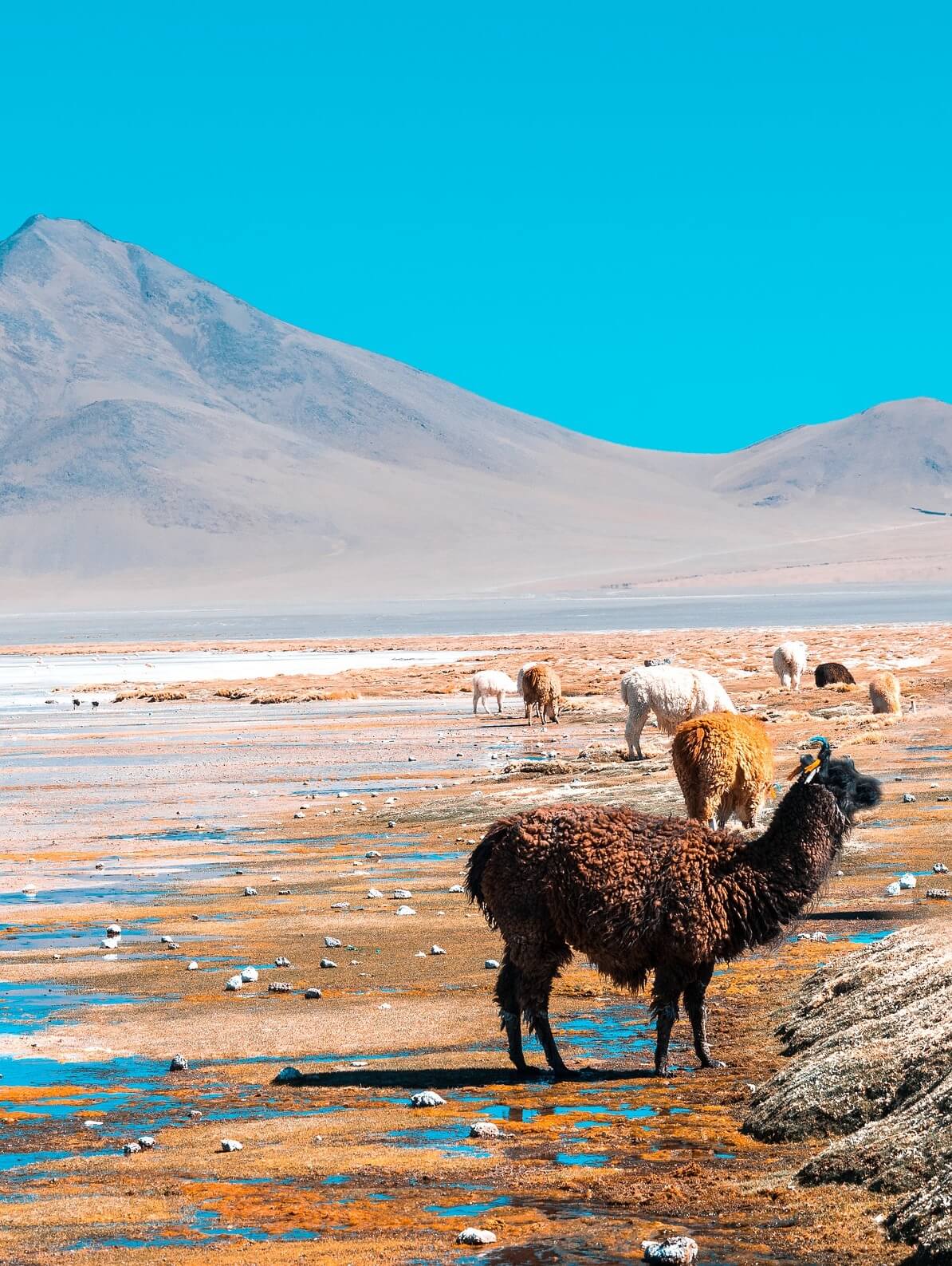
Traverse swathes of uninhabited & inhospitable territory
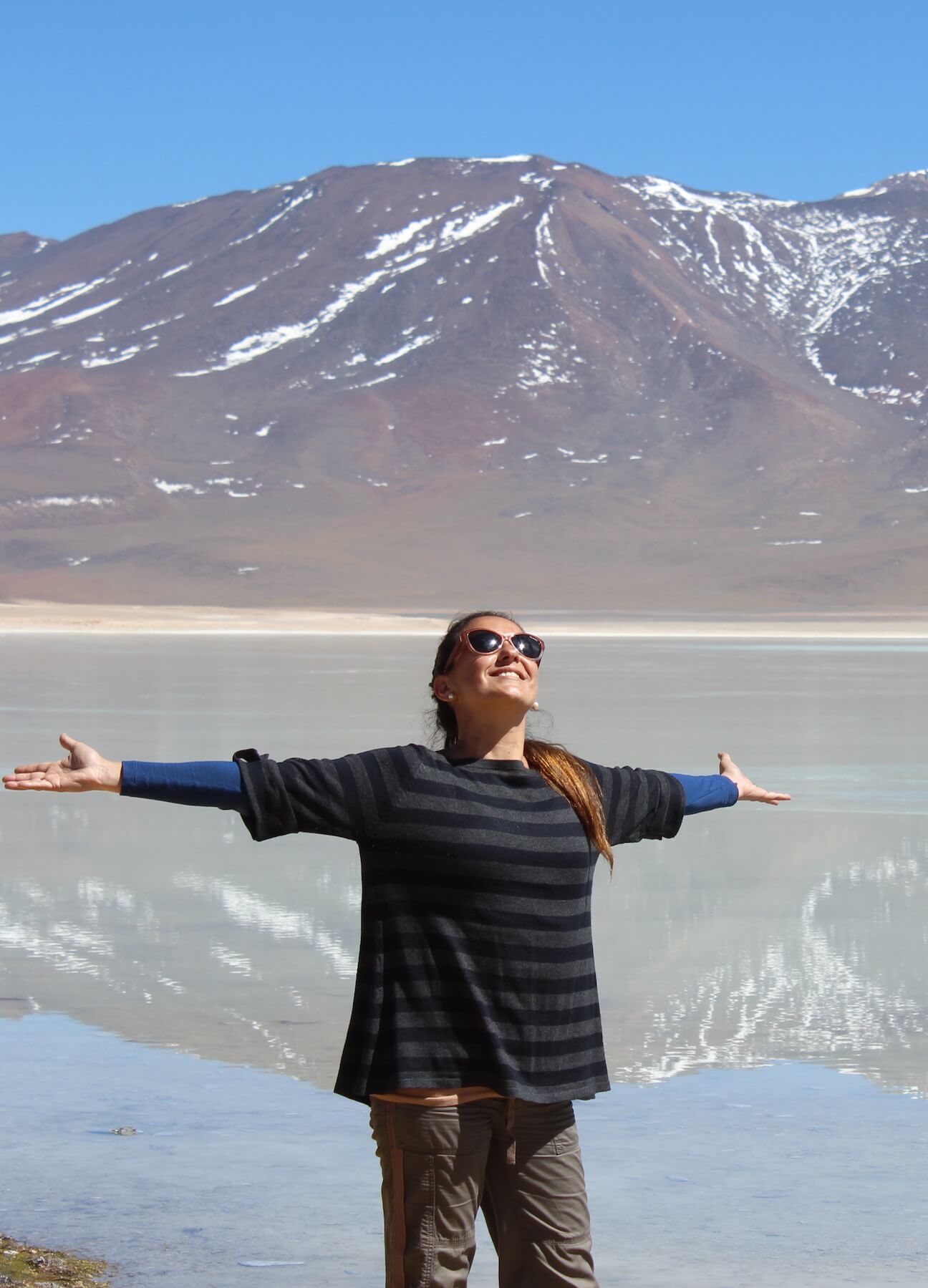
After even a few hours of driving through this desolate, barren yet hauntingly beautiful landscape, you will understand why it is considered the Wild West of South America and why Butch Cassidy and the Sundance Kid escaped to Bolivia to avoid being found by their pursuers: It is extremely easy to get lost in this wilderness.
Apart from the innumerable wonders scattered around this region of Bolivia, the main reason for visiting this fascinating place is the salt flats. A favorite destination for travelers wanting to capture those mythical shots where things and people appear smaller than they are in the unique tricks of perspective the flats play for the camera.
The salt flats are also home to Incahuasi Island, also known as Fisherman’s Island, this small mass in the middle of the salt desert formed on top of the remains of a volcano that rises about 500 feet (150 meters) above the surface of the salt lake. Thousands of cacti, some reaching higher than 30 feet (10 meters), grow there and make for a surreal spectacle against the eerie white expanse of the salt pan. Uyuni itself is home to a train graveyard, which is also popular with tourists who like to scale the ghostly, rusted carriages and pose for photos.
build your clients trip with our experts

WHAT NOT TO MISS IN
Uyuni & Salt Flats
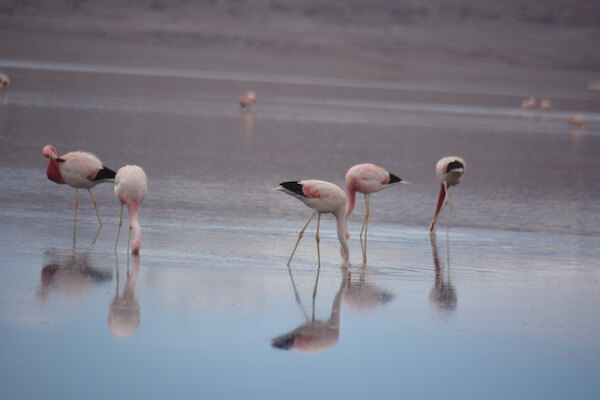
Laguna Verde and Colorado
Near the Chilean border, these two lake occupy some 1700 hectares. The lake’s colors range from turquoise to dark emerald due to massive subsoil deposits of arsenic, magnesium, carbonate, and calcium. Between April and September is considered the best time to visit Laguna Verde, but it can be very windy any time of year, so warm clothes are essential.
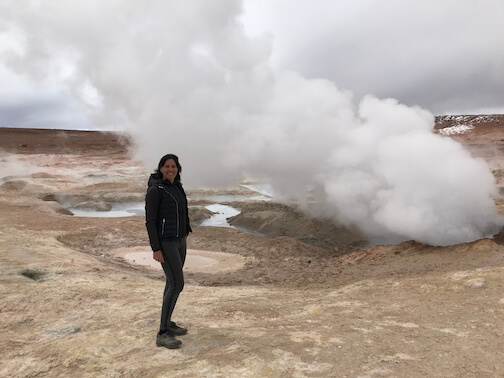
Sol de Mañana Geyser
This geothermal area spreads over 10 square kilometers, lined with geysers, bubbling mud pots, and a distinct scent of sulfur. The entire desert region is volcanic and active, the hot steam emitted by the geysers reach heights of up to 15 meters. Sunrise intensifies the light at dawn, creating a spectacular visual experience, as if you were on some other planet.
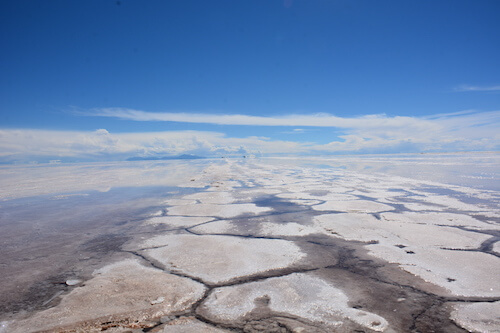
Ojos de Salar
Along the edge of the salt flats, the salt is very thin here, and you can see the water from the underground rivers bubbling, which comes along with a potent odor of sulfur. The sources for subterranean rivers flowing beneath the Uyuni Salt Flat are the “Eyes of the salt flat.” The waters have unique acidic concentrations, and the locals consider them medicinal.
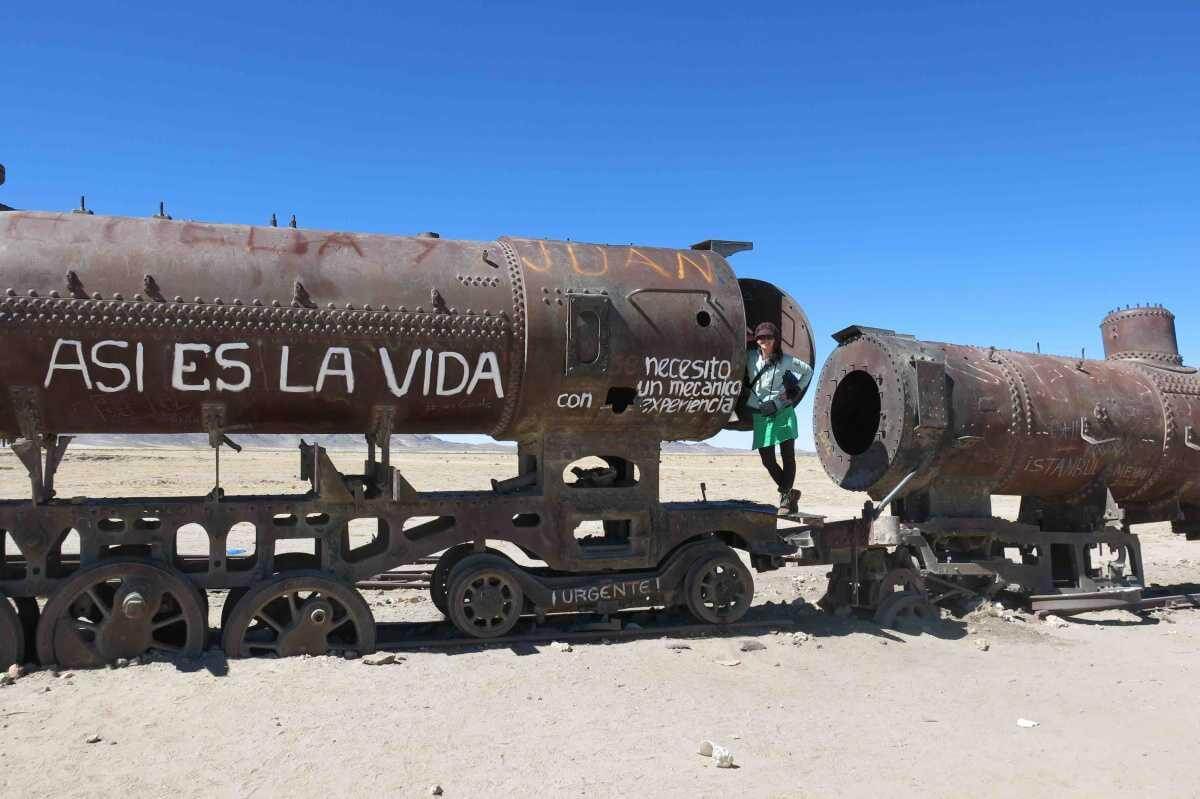
Train Cemetery
Because of the nearby mines, Uyuni used to be a significant town for transporting goods and minerals. The trains were written off and abandoned when the mining sector collapsed in the 1940s, it’s truly a surreal place and an excellent opportunity to take pictures at sunset. There are no rules about climbing in/on the trains, so get ready for to explore.
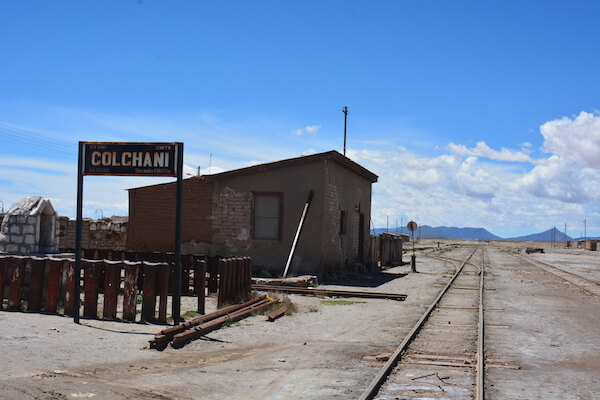
Colchani
A quaint village of around 600 inhabitants just outside the Uyuni salt flats, home to Bolivia’s largest salt-processing cooperative. The residents of Colchani used to mine salt years ago to trade with other indigenous groups. Packs of llamas traveled long distances carrying the salt to all corners of Bolivia, returning with coca, maize, and other products outside the altiplano.
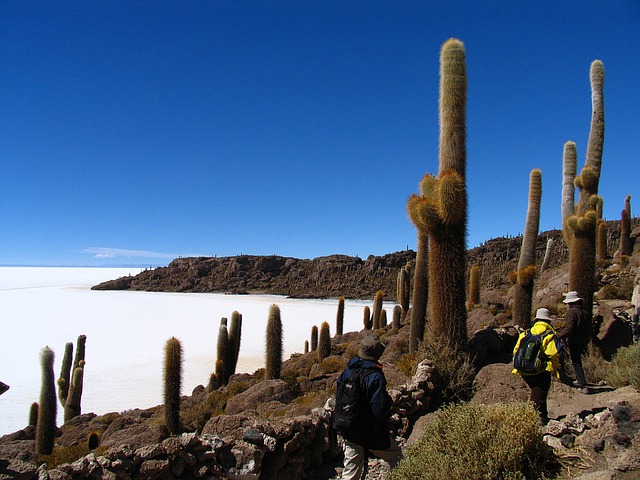
Isla Incahuasi
At the heart of the salt flats, years ago this area was used as a refuge for those traversing the salt flats; now, it’s considered one of Uyuni’s more fascinating places. A native species of cactus, surrounded by a flat sea of white hexagonal salt tiles, covers the terrain, growing over two meters tall, and some 10 meters. The climb to the top takes around 15 minutes each way.
destination map

| Title | Address | Description |
|---|---|---|
La Paz | La Paz, Bolivia | Is the highest capital of the word, situated at just over 3,600m (2Mi). In La Paz the new customs of the Western world collide and coexist with the old customs of the Aymara and the Quechua. Hi-tech international banks and government offices rub shoulders with vibrant street markets that still play a central role in the lives of the indigenous. Read more… |
Lake Titicaca & Sun Island | Isla del Sol, Bolivia | The sacred and mystic Lake of the Inca is the highest navigable surface in the world. This magic territory harbors in its breast the archaeological complex of the oldest civilization on the continent. Venture to the visionary Island of Sun to admire the spectacular scenery and ancient Incan ruins.Read more… |
Uyuni Salt Flats | Uyuni, Bolivia | The brightest spot on earth visible from space, this white salt desert hosts many natural wonders: fascinating colored lagoons, exotic rock formations, a diversity of animals, intact natural environment, volcanic craters and fumaroles blowing steam reaching up to 100 meters in height… Prepare to be amazed! Read more… |
Santa Cruz | Santa Cruz de la Sierra, Bolivia | Santa Cruz is hugely popular as a place to visit or live because of its tropical desert climate created by its low-lying location and sunny skies year-round. This developed city is a fascinating mix of old and new, with high rise buildings that define the skyline juxtaposed with colonial churches and administrative buildings at the street level. Read more… |
Andes – Sucre & Potosi | Sucre, Bolivia | “The White City” of Sucre has been immaculately preserved and oozes colonial charm with red-tiled roofs, baroque churches, and leafy plazas. Potosi embodies the rise and fall of Bolivia’s industrial history. Once a thriving mining town, it is now a fascinating example of colonial decline peppered with church lined cobbled streets. Read more… |
Bolivian Amazon | Pampas, Bolivia | Two areas to visit in the Bolivian Amazon: The Pampas & Jungle. The pampas may not be seem like a typical “Amazon experience”, a wetland savannah bordering the Amazon basin. In the Amazon jungle, hosts a number of activities like jungle treks, piranha fishing, cultural encounters with communities, and botanical medicines.Read more… |
Depending on your client’s preferences, we can help you determine the best experiences tailored for your clients. From where to visit, when to go, what to do and how to get there safely, our travel experts will help you create an experience your clients will love.
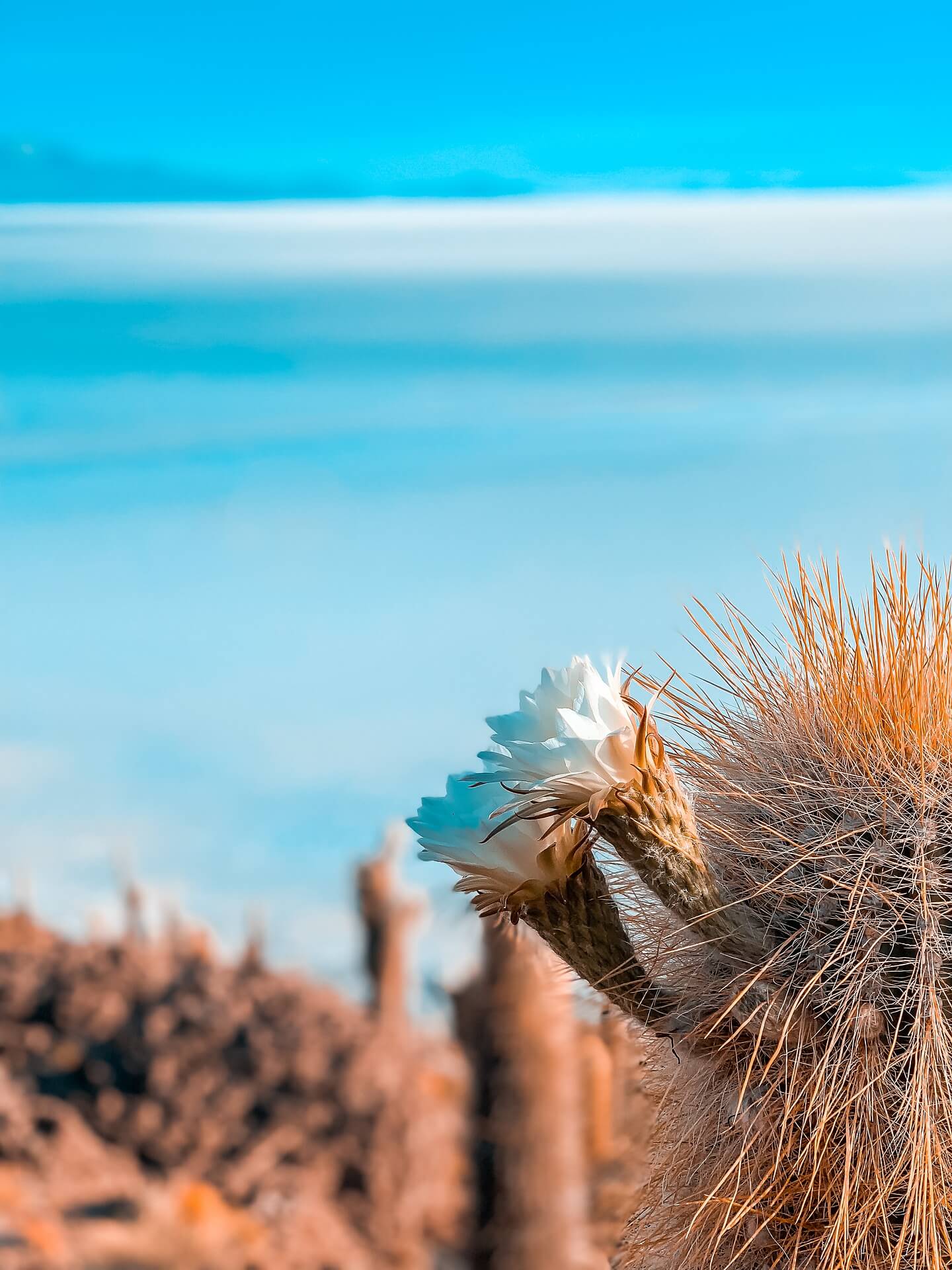
Best times to visit Uyuni & Salt Flats
It is best to choose which time you visit the Salar de Uyuni based on what you want out of your trip. If you don’t mind weathering some rain to experience the salt flats’ incredible mirror effect when covered in a thin sheet of rain, try the rainy season between November and April. It’s perhaps the best time to take the ever-popular photographs of distorted perspective, but also of the mind-boggling reflections that the ground surface allows. However, suppose you’re not so keen on rain, in the dry season from May to November. In that case, the sunny days illuminate the salt deposits, make for uninterrupted vistas across the flats, and cast spectacular light over the many colorful lagoons in the area.
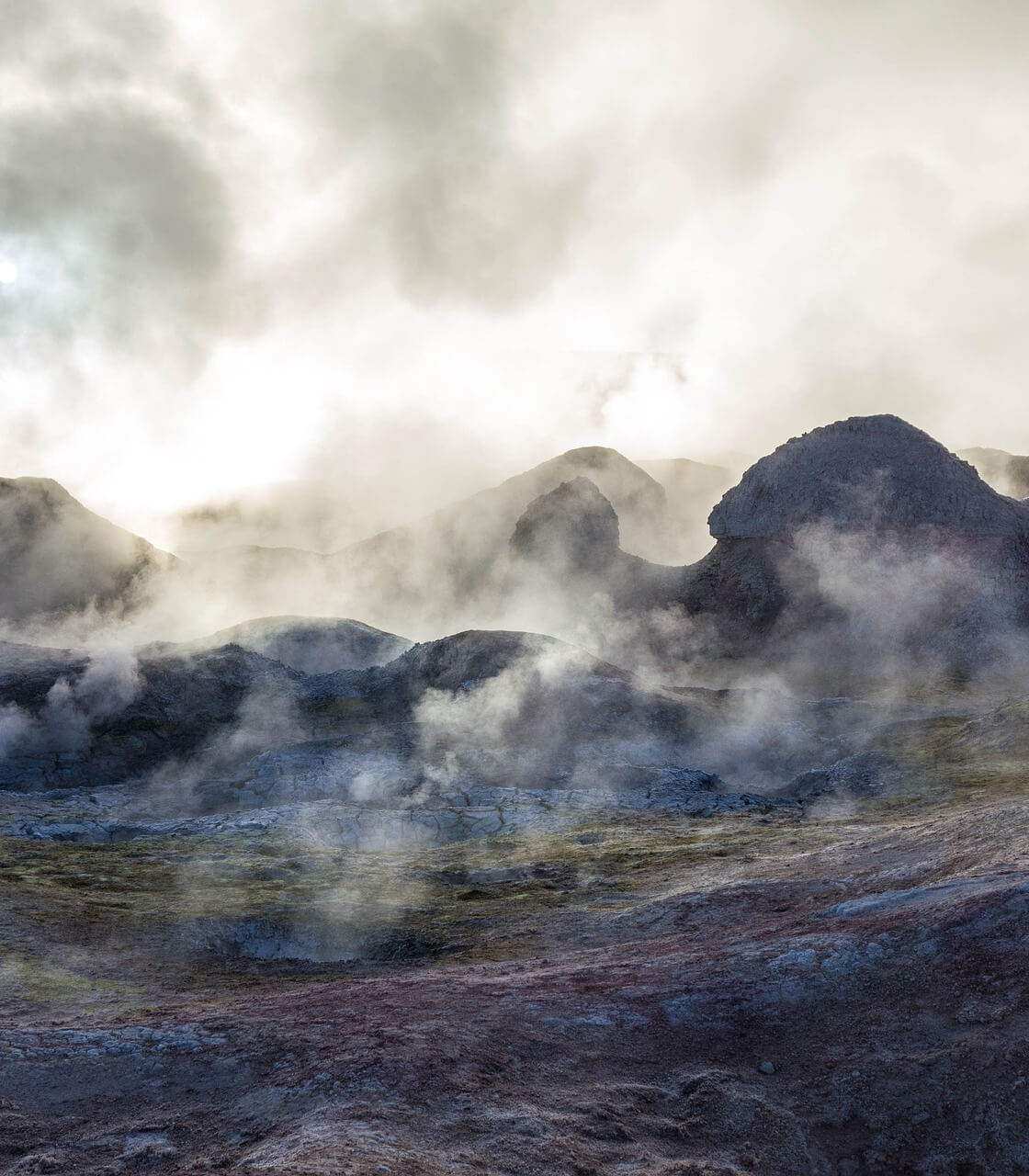
practical information
HOW TO GET THERE
Uyuni is located in southwestern Bolivia, about eight hours south of La Paz. Depending on where you are coming from, there are many different ways to get to Uyuni. If you are coming from the south, from Argentina, you will usually get a bus across Villazon’s border town, and from there, you will take a bus to Tupiza, a tourist town from where many tours of the salt flats originate. If you are coming from La Paz or other Bolivian destinations, buses connect directly to Uyuni, and you can commence your tour from there. Bolivian roads are often unpaved so that bus rides can be long, bumpy, and cramped. The preferred option is to fly from La Paz to Uyuni, but we will arrange all internal flights for you as part of your itinerary.
GETTING AROUND
The only way to explore the salt lake is in a 4-wheel drive. You will only see older car models here, as the salt is very damaging to the electronics of the car and newer models will not last. There are 2 possible ways to set up your tour: ether you opt for a private version; where you have a driver and a car. Since the drivers do not speak English, it is recommended to make sure you have an English guide by your side. The other option is to book a group service, which is really a lot cheaper, however the cars will used to maximum capacity, which means 7 people in one Toyota land cruiser and luggage on top.
WHERE TO STAY
Uyuni is pretty limited when it comes to accommodation: there are many budget options and a few 4 star alternatives. The more comfortable options are on the expensive side. When exploring Uyuni as a multiple day excursion, you have 2 options:
You can book a group excursion, with means you will travel with a small group of 7 in one car and stay in very simple rural accommodation. You can request a private room/ the alternative is a private tour, where you have your own car and can opt for more comfortable accommodation. There are only 3 more comfortable lodges in the Uyuni region and they can only be reached with private transport.
Uyuni and the salt flats tour can be a challenge for your system. Spend a day or two acclimatising to the altitude before you commence your trip to the altiplano.
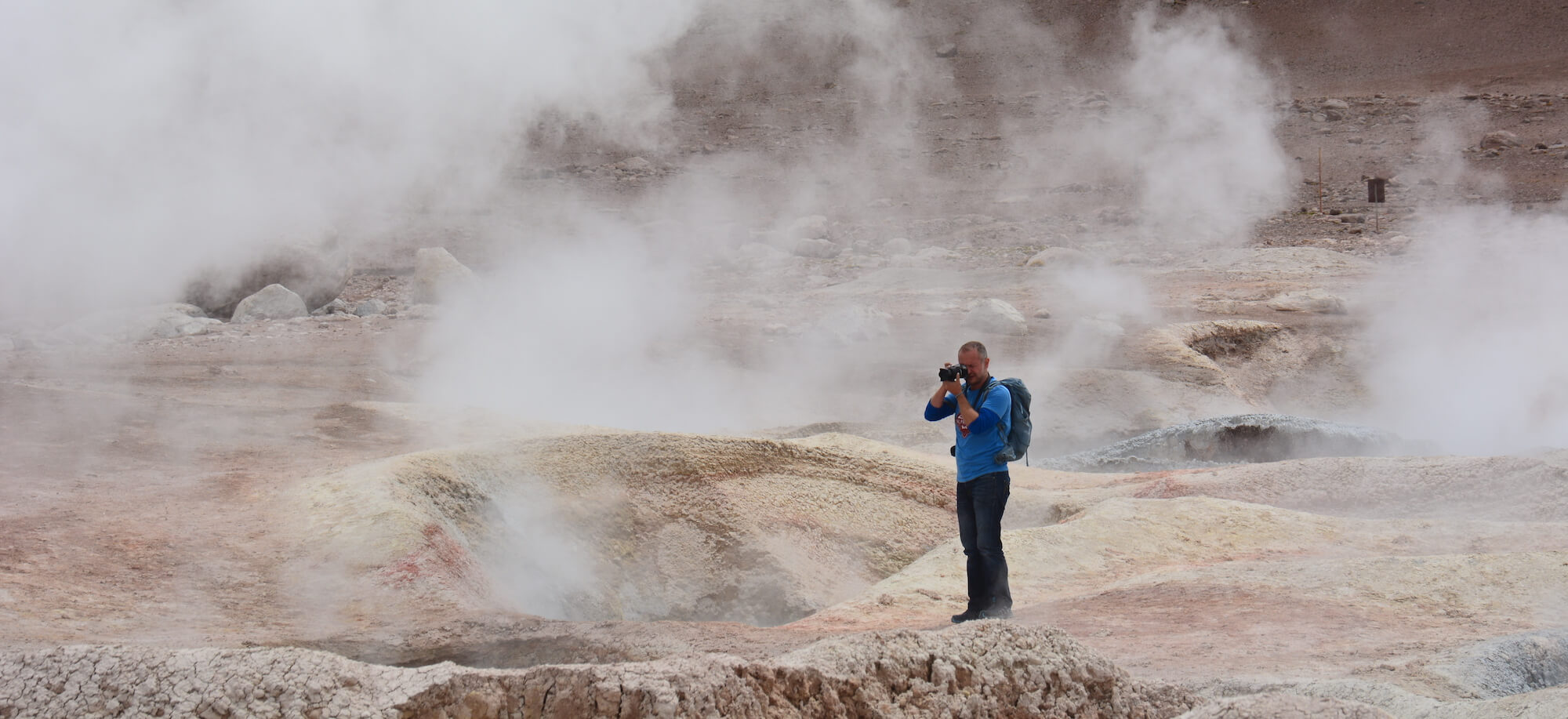
More highlights of Bolivia
With eight local offices in Latin America, we have the perfect base to help you build the perfect trip for your clients. Unrivaled experience with a wide selection of bed & breakfasts, small posadas, unique boutique hotels and world class luxurious lodging.
